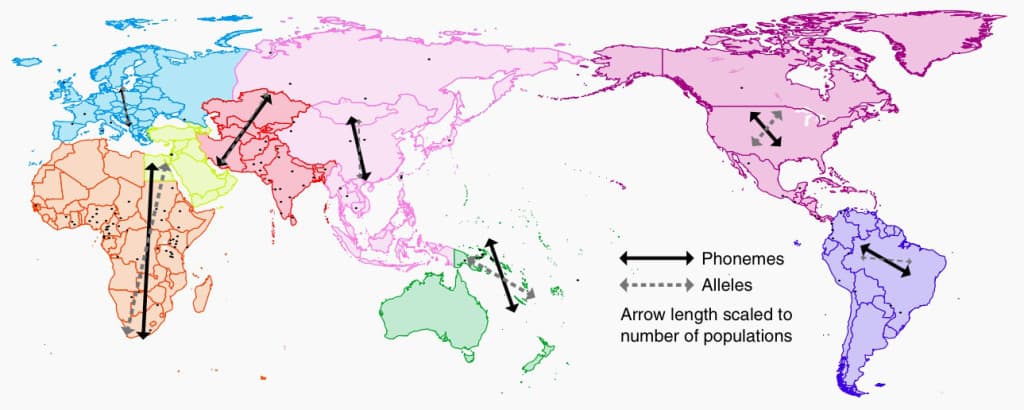On a global scale, both genetic distance and phonemic distance between populations are significantly correlated with geographic distance, where phonemics has to do with sound units that distinguish meaning between words in language.
As populations move away, it brings about change in both the linguistics and genes of the respective populations.
Greater the dispersion in geographies, greater is the change in both genes and phonemes.
These findings were made true by data analyses conducted jointly and in parallel, from phoneme inventories from 2,082 worldwide languages and microsatellite polymorphisms from 246 global populations, where Microsatellite polymorphisms are individually varying DNA sequences.
Published in the Proceedings of the National Academy of Sciences, the study was carried out by a research team that comprised of anthropologists and biologists from Stanford University, University of Manitoba and Brown University.
Using statistical data analyses, study revealed certain other nuances as well: “Geographically close language pairs share significantly more phonemes than distant language pairs, whether or not the languages are closely related,” the research says.
It was also found that although “geographically isolated populations lose genetic diversity via genetic drift,” phonemes act differently: “within a given geographic radius, languages that are relatively isolated exhibit more variance in number of phonemes than languages with many neighbours.”
Read the full study here.
(Image credit: ЕленАндреа, via Flickr)







